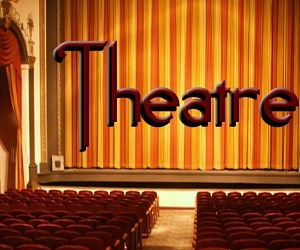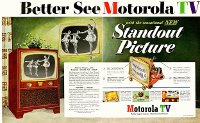Recently, a friend of mine who is quite well connected, suggested I go to an interesting event featuring an amazing movie called A Convenient Truth: Urban Solutions from Curitiba, Brazil. The movie covered 4 areas of innovation in the city of Curitiba:
- Transportation
- Recycling
- Parks
- Affordable Housing

Curitiba Transportation System
Curitiba created very streamlined, dedicated lanes through the center of town for buses that (at peak times) would carry 100 people per bus reloading every 50 seconds through well-thought-out loading platforms. This strategy made it easier and quicker to take the bus, rather than a car, through town- thus reliving congestion as more people chose mass transit. Private companies were reimbursed per kilometer driven to run the companies and collected transit tokens in exchange.

Curitiba Recycling System
There was a multi-pronged initiative to both beautify the city as well as to create an alternative currency exchange: trading recyclables and organic waste for bus tokens, thus enabling the poor. Curitiba started this program in the schools, encouraging children to bring in recyclables (“the trash that is not trash”) during the months before Christmas. These were then transformed into new toys made from the “trash that is not trash” and given back for free at Christmas. They also used the population of people in work training programs or rehabilitation programs to work in the recycling sorting center to make the recycling program profitable. Programs like this helped recycling reach 80% participation in this developing country.

Curitiba Park Initiatives
Environmental Programs through Park Initiatives
There were many environmental problems in Curitiba before reforms began to be put in place in the late 60′s. There was flooding of home areas due to poor planning, industrial waste sites, and also pressures due to rapid population explosion as the urban setting seemed to become more and more appealing. A common approach to several of these problems was to have a park building initiative.
Instead of building expensive levy systems to hold back floods in rainy seasons they built many parks following the natural courses of the rivers. This lead to very beautiful, natural looking parks. People who were living in harms way (high-risk-flood-areas), were compensated to help them move elsewhere or helped to relocate into one of the low income housing initiatives (more below). In one dramatic case a large lake was created in a formerly flood-prone slum area; the cost of creating this and relocating the population was less than 1/5 the cost of creating a levee.
A toxic waste dump on a cliff-side was exchanged for industrial space in another part of the city; a waterfall was created to make a beautiful park where before there had only been an unhealthy, unappealing, barren landscape. With all the parkland created between 1981 and the present time the amount of park area was raised from less than .5 square meters per inhabitant to more than 50 square meters per inhabitant — far above the UN endorsed standard of 12 per square meter. These practices make a better living experience for all and raise property values while raising more than enough money to cover the original costs. As a result, tourism has greatly increased in Curitiba.

Curitiba Housing
There were a number of interesting principals that were used that tried to follow these general principals to make Curitiba a better place to live in dealing with affordable housing:
* Don’t segregate your social classes by moving affordable housing further and further away.
* Conversely, bring needed health and education services to them, and create local economic opportunity in neighborhoods instead of forcing long commutes.
* Empower the poor – make them less desperate and neighborhoods less dangerous.
Large warehouses were built to give free space for low income workers to run their own businesses after a training course that dovetail with the participants’ natural talents. People were given the chance to buy their low income housing over time and to change their living spaces to customize it to their own aesthetic tastes. This program allowed people to use a two level home as a family run business on the ground floor with living arrangements for the family on the top floor. Large developments that were already remote as well as rural areas nearby were further developed to add on educational and health facilities. This encouraged less migration and crowding in the urban centers.
The formerly addressed programs in transportation, recycling, and parks were also integrated into these efforts to improve the quality of life for all inhabitants of the city, not just the top 10% as is the norm in many large urban settings of developing countries.
For more information about the housing initiatives please check out this link on Curitiba Housing Initiatives.
Of what significance is it to those of us living in NYC that Curitiba was able to institute these innovative sustainability systems on little or no budget?
A) Many of these ideas would make sense to implement at least in part in our New York Neighborhoods … and if they were able to implement with little or no budget shouldn’t we be able to make an even better place to live in New York with what we have?
B) We should do what needs to be done sooner rather than later because improving quality of life for everyone is to everyone’s benefit.
In the discussions after the movie it was echoed over and over that Curitiba seemed to beat us at solving common urban problems with less resources. There was strong interest in showing the film to local government officials as well as to school children — if only to show our children what can be possible.
Remember it’s much more important to contribute than to simply participate. Add a link, attend a meeting, plant a tree, or do whatever you can think of to do your part.
To find out more about the groups involved
This is from the original announcement from the Sustainable Oil Response Meetup Group:
Sustainable Flatbush presents Future Visions film/discussion series!
Sponsored by Sustainable Flatbush, Ditmas Park West Neighborhood Association and Flatbush Food Coop .
This film showing was part of the Future Visions Film/Discussion Series was created by Sierra Club NYC Group, Neighborhood Energy Network, Beyond Oil NYC, and Tri-State Food Not Lawns as a vehicle to educate and then engage people in discussion about environmental issues. In partnership with local groups, the Future Visions series is being presented in locations throughout New York City.








{ 0 comments… add one now }